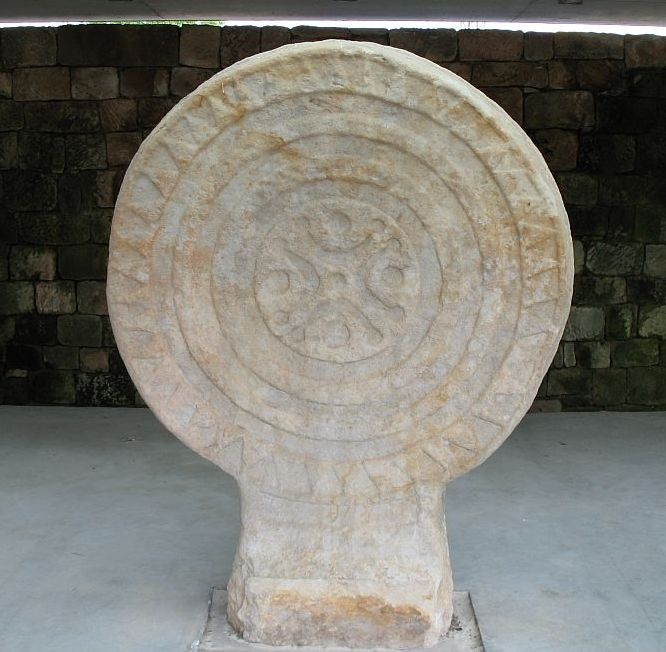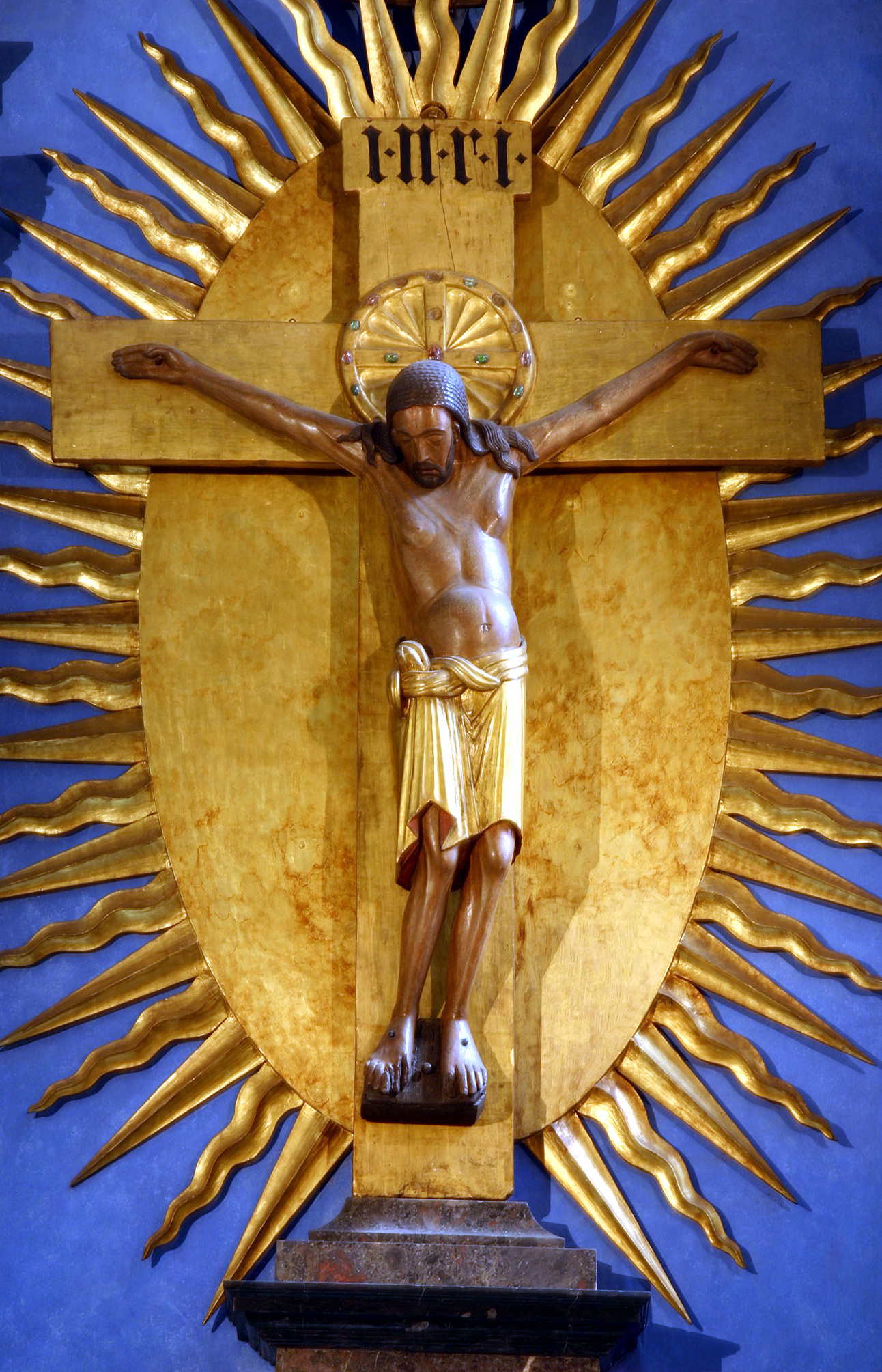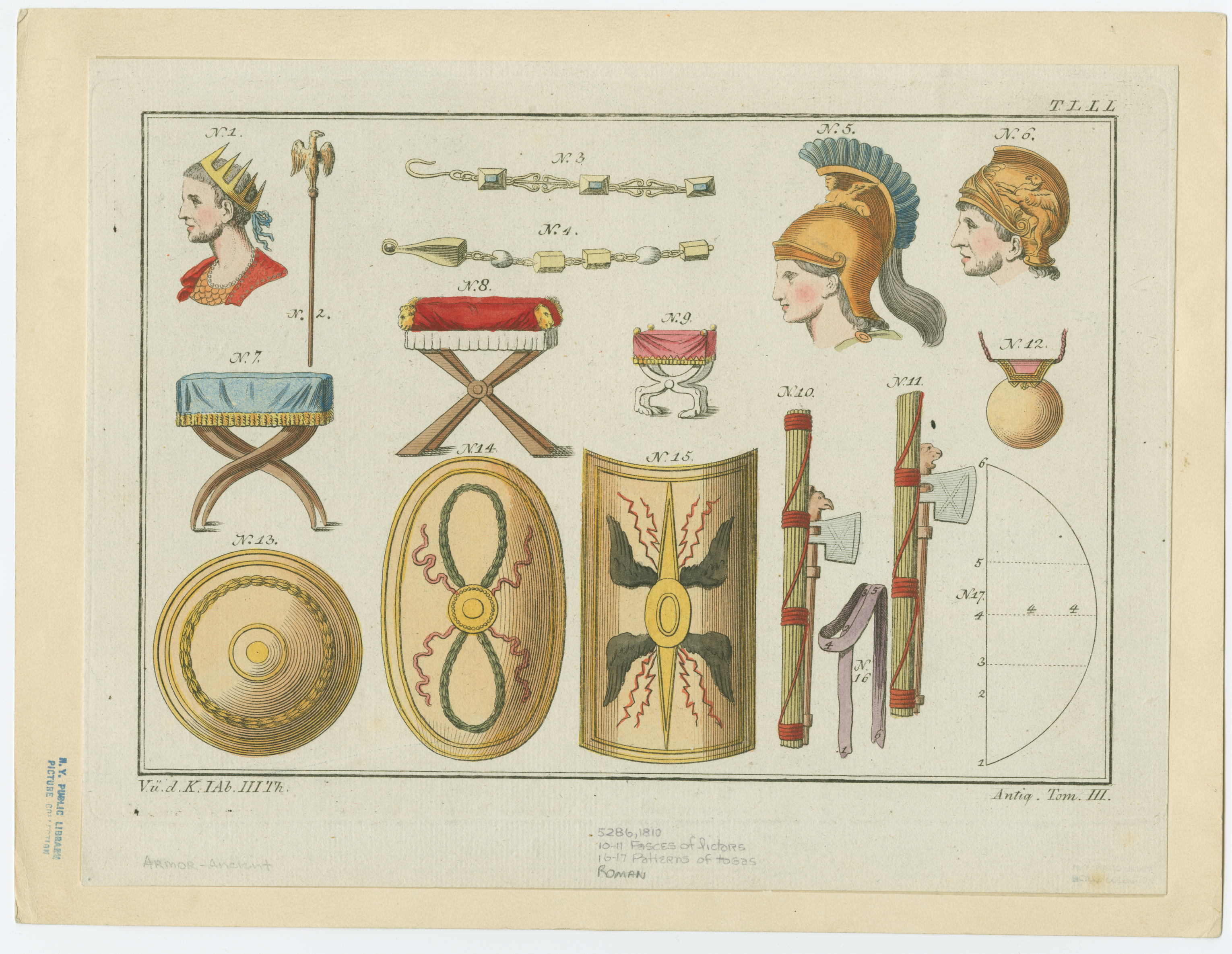|
Lábaro
The Cantabrian labarum ( Cantabrian: ''lábaru cántabru'' or ) is a modern interpretation of the ancient military standard known by the Romans as '' Cantabrum''. It consists of a purple cloth on which there is what would be called in heraldry a "saltire voided" made up of curved lines, with knobs at the end of each line. The name and design of the flag is in the theory advocated by several authors of a relationship between the genesis of labarum and the military standard called ''Cantabrum'', thereby identifying both as a same thing; and the alleged relationship the Codex Theodosianus established between the ''Labarum'' and the Cantabrarii, the school of Roman soldiers in charge of carrying the ''Cantabrum''. Additionally, and according to the definition of the Royal Academy of the Spanish language, labarum is the Roman standard (as in military ceremonial flag) on which, under Emperor Constantine's rule, the cross and the Monogram of Christ (Chi-Rho) was drawn. By association ... [...More Info...] [...Related Items...] OR: [Wikipedia] [Google] [Baidu] |
Comillas
Comillas is a small township and municipality in the northern reaches of Spain, in the autonomous community of Cantabria. The Marquessate of Comillas, a fiefdom of Spanish nobility, holds ceremonial office in the seat of power at a small castle which overlooks the town. The Comillas Pontifical University was housed here before it moved to Madrid, and the old university buildings are among the finest examples of architecture in the town. Besides this, there are many notable medieval and baroque buildings. From the second half of the 19th century, the Spanish royal family started spending their summers in Comillas, and so did a large part of the Spanish nobility, whose many descendants still frequent the town every summer. As a result, Comillas left an imprint of architectural relics such as palaces and monuments designed by renowned Catalan artists in particular, i.e. Gaudí or Doménech i Montaner. From the second half of the 20th century however, southern Spain and the island ... [...More Info...] [...Related Items...] OR: [Wikipedia] [Google] [Baidu] |
Breton Language
Breton (, , ; or in Morbihan) is a Southwestern Brittonic language of the Celtic languages, Celtic language group spoken in Brittany, part of modern-day France. It is the only Celtic language still widely in use on the European mainland, albeit as a member of the Insular Celtic languages, insular branch instead of the extinct Continental Celtic languages, continental grouping. Breton was brought from Great Britain to Armorica (the ancient name for the coastal region that includes the Brittany peninsula) by migrating Britons (Celtic people), Britons during the Early Middle Ages, making it an Insular Celtic language. Breton is most closely related to Cornish language, Cornish, another Southwestern Brittonic language. Welsh language, Welsh and the extinct Cumbric language, Cumbric, both Western Brittonic languages, are more distantly related, and the Goidelic languages (Irish language, Irish, Manx language, Manx, Scottish Gaelic) have a slight connection due to both of their origi ... [...More Info...] [...Related Items...] OR: [Wikipedia] [Google] [Baidu] |
Christogram
A Christogram () is a monogram or combination of letters that forms an abbreviation for the name of Jesus Christ, traditionally used as a Christian symbolism, religious symbol within the Christian Church. One of the oldest Christograms is the Chi-Rho (☧). It consists of the superimposed Greek letters Chi (letter), chi and Rho (letter), rho , which are the first two letters of the Greek , 'Christ'. It was displayed on the military standard used by Constantine I in 312 AD. The IX monogram () is a similar form, using the initials of the name , 'Jesus (the) Christ', as is the IH monogram, ΙΗ monogram (), using the first two letters of the name , 'JESUS' in uppercase. There were a very considerable number of variants of "Christograms" or monograms of Christ in use during the medieval period, with the boundary between specific monograms and mere scribal abbreviations somewhat fluid. The name ''Jesus'', spelt in Greek capitals, has the abbreviations ''IHS'' (also written ''JHS, ... [...More Info...] [...Related Items...] OR: [Wikipedia] [Google] [Baidu] |
Christian Symbolism
Christian symbolism is the use of symbols, including archetypes, acts, artwork or events, by Christianity. It invests objects or actions with an inner meaning expressing Christian ideas. The symbolism of the early Church was characterized by being understood by initiates only, while after the legalization of Christianity in the Roman Empire during the 4th century more recognizable symbols entered in use. Christianity has borrowed from the common stock of significant symbols known to most periods and to all regions of the world. Only a minority of Christian denominations have practiced aniconism, or the avoidance or prohibition of types of images. These include early Jewish Christian sects, as well as some modern denominations such as Baptists that prefer to some extent not to use figures in their symbols due to the Decalogue's prohibition of idolatry. Early Christian symbols Cross and crucifix The shape of the cross, as represented by the letter T, came to be used as a ... [...More Info...] [...Related Items...] OR: [Wikipedia] [Google] [Baidu] |
Labrys
''Labrys'' () is, according to Plutarch (''Quaestiones Graecae'' 2.302a), the Lydian language, Lydian word for the Axe#Components, double-bitted axe. In Greek it was called (''pélekys''). The plural of ''labrys'' is ''labryes'' (). Etymology Plutarch relates that the word was a Lydian language, Lydian word for 'axe': . ("For Lydians name the double-edged axe 'Labrys). Many scholars including Arthur Evans assert that the word ''labyrinth'' is derived from ''labrys'' and thus implies 'house of the double axe'. A priestly corporation in Delphi was named ''Labyades''; the original name was probably ''Labryades'', servants of the double axe. In the Roman era at Patrai and Messene, a goddess Laphria (festival), Laphria was worshipped, commonly identified with Artemis. Her name was said to be derived from the region around Delphi. In History of Crete, Crete the "double axe" is not a weapon, and it always accompanies female goddesses, not male gods, referring to the male bull god ... [...More Info...] [...Related Items...] OR: [Wikipedia] [Google] [Baidu] |
Fasces
A fasces ( ; ; a , from the Latin word , meaning 'bundle'; ) is a bound bundle of wooden rods, often but not always including an axe (occasionally two axes) with its blade emerging. The fasces is an Italian symbol that had its origin in the Etruscan civilization and was passed on to ancient Rome, where it symbolized a King of Rome, Roman king's power to punish his subjects, and later, a magistrate's Power (social and political), power and jurisdiction. The axe has its own separate and older origin. Initially associated with the labrys (; ), the double-Axe#Parts of the axe, bitted axe originally from Crete, is one of the oldest symbols of Greek civilization. The image of fasces has survived in the modern world as a representation of magisterial power, law, and governance. The fasces frequently occurs as a Charge (heraldry), charge in heraldry: it is present on the reverse of the U.S. Mercury dime coin and behind the podium in the United States House of Representatives and in the Se ... [...More Info...] [...Related Items...] OR: [Wikipedia] [Google] [Baidu] |
Lauburu
The lauburu (from Basque ''lau'', "four" + ''buru'', "head") is an ancient swastika with four comma-shaped heads and the most widely known traditional symbol of the Basque Country and the Basque people. In the past, it has also been associated with the Galicians, Illyrians and Asturians. A variant of lauburu consisting of geometrically curved lines can be constructed with a compass and straightedge, beginning with the formation of a square template; each head can be drawn from a neighboring vertex of this template with two compass settings, with one radius half the length of the other. Background Historians and authorities have attempted to apply allegorical meaning to the ancient symbol of lauburu. Augustin Chaho. Quoted by Santiago de Pablo, pages 114 and 115. said it signifies the "four heads or regions" of the Basque Country. The lauburu does not appear in any of the seven historical provinces' coats-of-arms that have been combined in the arms of the Basque Country: Bi ... [...More Info...] [...Related Items...] OR: [Wikipedia] [Google] [Baidu] |
Labarum
The labarum ( or λάβουρον) was a '' vexillum'' (military standard) that displayed the "Chi-Rho" symbol ☧, a christogram formed from the first two Greek letters of the word "Christ" (, or Χριστός) – '' Chi'' (χ) and ''Rho'' (ρ). It was first used by the Roman emperor Constantine the Great. Ancient sources draw an unambiguous distinction between the two terms "labarum" and "Chi-Rho", even though later usage sometimes regards the two as synonyms. The name labarum was applied both to the original standard used by Constantine the Great and to the many standards produced in imitation of it in the Late Antique world, and subsequently. Etymology Beyond its derivation from Latin ''labarum'', the etymology of the word is unclear. The Oxford English Dictionary offers no further derivation from within Latin. Some derive it from Latin ''labare'' 'to totter, to waver' (in the sense of the "waving" of a flag in the breeze) or ''laureum exillum' ("laurel standard").Kazhd ... [...More Info...] [...Related Items...] OR: [Wikipedia] [Google] [Baidu] |
Flag Of Cantabria
The flag of the Spanish region of Cantabria is made up of two horizontal stripes of equal width, white on the top and red on the bottom, and the region's coat of arms in its centre. The design is established in the text of the Autonomy Statute, except for the coat of arms, which was established by a Law of the Regional Assembly approved on 30 December 1981. The design traces its lineage to the ship registration flag of the maritime province of Santander, assigned by Royal Order on 30 July 1845. In 2016, the Parliament of Cantabria also recognized the Cantabrian labarum as a symbol of the Cantabrian people, urging the institutions and civil society of Cantabria to promote its use. Most townships have already accepted the proposition of using said flag placing it on the balcony of the Town Hall. Notes References(Spanish) See also * Coat of arms of Cantabria *The '' Lábaru'', or Cantabrian Labarum. {{Spanish Flags Cantabria Flag A flag is a piece of textile, ... [...More Info...] [...Related Items...] OR: [Wikipedia] [Google] [Baidu] |
Cantabrian People
The Cantabrians ( Cantabrian and ) are the people who inhabit the autonomous community of Cantabria, in northern Spain."Even today, Cantabrians (the Pasiego included, Lebaniegos excluded), at the North of Spain, seem to be a genetically well differentiated community, as deduced from uniparental and autosomal markers, perhaps to a higher degree than their neighbours, the Basques". http://grupos.unican.es/acanto/aep/bolpas/Ann-Hum-Genet.pdf . Sometimes they are referred to as ''"montañeses"'' (meaning ''Highlanders''). The traditional dialects in this region, known as ''Cantabru'' or ''Montañés'', are related to the Astur-Leonese languages. References See also * Cantabri *Cantabria * Cantabrian language * Duchy of Cantabria * Kingdom of Asturias *Crown of Castile The Crown of Castile was a medieval polity in the Iberian Peninsula that formed in 1230 as a result of the third and definitive union of the crowns and, some decades later, the parliaments of the kingdoms of King ... [...More Info...] [...Related Items...] OR: [Wikipedia] [Google] [Baidu] |
Parliament Of Cantabria
The Parliament of Cantabria is the unicameral legislature of the autonomous community of Cantabria. It consists of 35 members called "deputies" which are freely elected by the citizens of the region. The Parliament convenes at the Saint Raphael Hospital, an 18th-century building in the city of Santander rehabilitated in the 1980s to house the Regional Assembly. Prior to 1998, the Parliament was called Regional Assembly of Cantabria. Following the 2023 Cantabrian regional election, the People's Party has the plurality of seats and is the governing party. Elections and voting The number of seats in the Parliament of Cantabria is set to a fixed-number of 35. All Parliament members are elected to a four-year term in a single multi-member district, consisting of the Community's territory (the province of Cantabria), using the D'Hondt method and a closed-list proportional representation system. Voting is on the basis of universal suffrage in a secret ballot. Only lists polling a ... [...More Info...] [...Related Items...] OR: [Wikipedia] [Google] [Baidu] |






